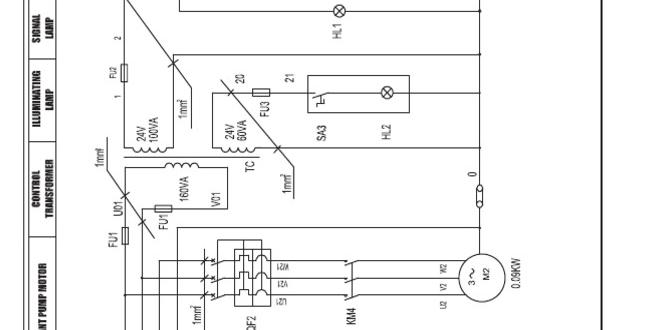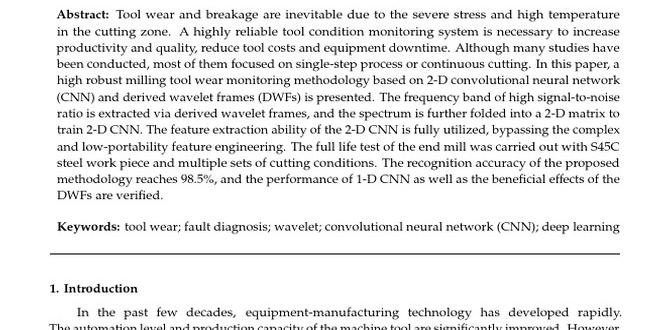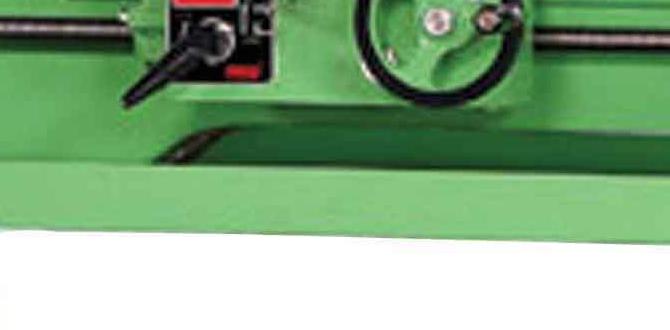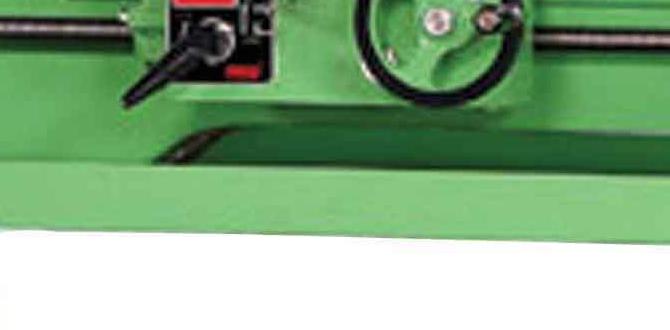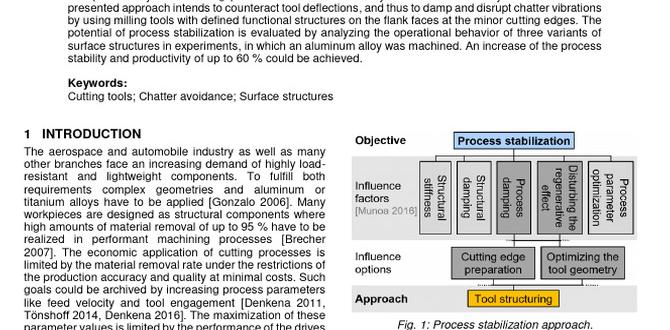Quick Summary: Yes, a 1/8 inch carbide end mill with a 1/2 inch shank is an excellent solution for preventing plywood chatter. Its rigidity and sharpness cut cleanly, minimizing vibration and leaving a smooth finish, making it ideal for your CNC projects.
Carbide End Mill 1/8 Inch 1/2 Shank: Your Proven Plywood Chatter Solution
Ever get frustrated by that annoying, fuzzy vibration when your CNC router tries to cut plywood? It’s called chatter, and it leaves your cuts looking rough and unprofessional. Don’t worry, this is a common issue for many makers, especially when working with plywood. The good news is, there’s a simple, reliable fix: a specific type of cutting tool. Let’s dive into how a 1/8 inch carbide end mill with a 1/2 inch shank can be your secret weapon against plywood chatter. We’ll walk through why it works, how to choose the right one, and how to use it to get those clean, crisp cuts you’ve been dreaming of.
Why Plywood Loves to Chatter (and How to Stop It)
Plywood isn’t a single, uniform material. It’s made of thin layers of wood veneer, glued together with the grain running in alternating directions. This layered structure, combined with the glues and varying wood densities, presents a unique challenge for cutting tools.
When a cutting tool encounters these varying densities and glue lines, it can be slightly deflected. If the tool isn’t rigid enough, or if the cutting parameters aren’t quite right, this deflection can cause the tool to vibrate rapidly. This vibration bounces back and forth as the tool moves, creating an audible buzzing sound and a visible wavy pattern on the cut surface – that’s chatter.
Several factors contribute to chatter:
- Tool Rigidity: A flimsy tool will flex easily under load.
- Tool Sharpness: Dull edges tear material instead of cutting it cleanly, leading to increased force and vibration.
- Feed Rate and Spindle Speed: When these aren’t matched correctly, the material isn’t cleared efficiently, and the tool can be pushed or pulled unexpectedly.
- Workpiece Material: The inconsistencies in plywood are a major culprit.
- Machine Rigidity: Looseness in your CNC machine’s spindle, gantry, or other components can amplify vibrations.
Fortunately, we can address many of these issues with the right cutting tool. That’s where our star player comes in.
Meet the 1/8 Inch Carbide End Mill with a 1/2 Inch Shank
Let’s break down why this specific combination is so effective against plywood chatter:
Carbide vs. High-Speed Steel (HSS)
Most beginner-friendly end mills are made from High-Speed Steel (HSS). HSS is good, but carbide, specifically Tungsten Carbide, is a much harder and more rigid material. This superior hardness means:
- Better Edge Retention: Carbide stays sharper for longer, even when cutting abrasive materials like plywood. A sharper tool cuts more cleanly, reducing force and vibration.
- Higher Heat Resistance: Carbide can withstand higher cutting temperatures, allowing for faster cutting speeds without dulling as quickly.
- Increased Rigidity: Carbide is less likely to flex or bend under the cutting forces encountered in plywood, which is crucial for preventing chatter.
The 1/8 Inch Diameter
The small diameter of 1/8 inch is significant for several reasons when cutting plywood:
- Reduced Cutting Forces: A smaller diameter tool removes less material per flute pass. This means less force is required to push the tool through the material. Lower forces generally lead to less vibration.
- Better for Detail: While not the primary reason for chatter reduction, a 1/8 inch end mill is excellent for achieving fine details and intricate cuts often desired in CNC projects.
- Fits Smaller Machines: Many hobbyist CNC machines have smaller spindles that are well-suited for 1/8 inch shank tools.
The 1/2 Inch Shank
This is arguably the MOST critical part of the equation for chatter reduction with small-diameter end mills. Here’s why:
- Superior Rigidity and Stability: A 1/2 inch shank is significantly thicker and more robust than smaller shanks (like 1/8 inch or 1/4 inch). This beefier shank offers much greater resistance to bending and vibration. Think of it like trying to bend a thin twig versus a sturdy branch – the twig bends much more easily.
- Less Deflection: When the cutting forces try to push the end mill sideways, the thicker 1/2 inch shank will deflect far less than a thinner shank. Less deflection directly translates to less chatter and cleaner cuts.
- Secure Clamping: A 1/2 inch shank provides a more substantial surface area for your collet or chuck to grip. This means the tool is held more securely in the spindle, reducing the chance of it wobbling or shifting during operation.
- Works on Most Hobbyist CNCs: While some very small desktop machines might only accept 1/8 inch collets, most machines designed for sign making, prototyping, or general woodworking/metalworking projects will have a spindle capable of holding a 1/2 inch shank. You might need an adapter if your machine’s collet is smaller.
Choosing the Right 1/8 Inch Carbide End Mill for Plywood
Not all 1/8 inch carbide end mills are created equal, especially when tackling plywood. Here’s what to look for:
End Mill Geometry
For plywood, you want an end mill designed for smooth cutting and efficient chip evacuation.
- Number of Flutes: For plywood, 2-flute or 3-flute end mills are generally recommended.
- 2-Flute: These offer excellent chip clearance, which is vital for preventing material buildup and heat. This makes them a great choice for softer materials like plywood. The fewer flutes mean more space between them for chips to escape.
- 3-Flute: These can sometimes offer a smoother finish than 2-flutes because they take smaller, more frequent bites. However, they can also pack chips more easily if not run at the correct feed rates.
- Up-cut vs. Down-cut vs. Compression:
- Up-cut: The flutes spiral upwards, pulling chips out of the cut. This is good for cooling and chip evacuation but can lead to slight lifting of the material from the top surface.
- Down-cut: The flutes spiral downwards, pushing chips away from the top surface, resulting in a cleaner top edge. However, this can pack chips deeper into the cut and increase heat.
- Compression: These are a combination. The top part of the cutter has down-cut edges, and the bottom part has up-cut edges. This provides a clean top cut and pulls chips out from the bottom, making them ideal for plywood. They offer the best of both worlds for a smooth finish on both sides of plywood. You’ll often find these specifically marketed for “laminate” or “plywood.”
- Helix Angle: A higher helix angle (e.g., 45 degrees) can lead to smoother cutting action and less vibration compared to a standard 30-degree helix.
Material of the End Mill
As discussed, Tungsten Carbide is the material of choice for its hardness, rigidity, and edge retention. Look for end mills explicitly labeled as “Solid Carbide.”
Coating
While not strictly necessary for basic plywood cutting, certain coatings can offer benefits:
- Uncoated: Perfectly fine for most plywood applications on a hobbyist machine.
- TiN (Titanium Nitride): A common, cost-effective coating that adds a bit of hardness and lubricity, helping chips slide off.
- ZrN (Zirconium Nitride): Offers better lubricity and wear resistance than TiN.
- AlTiN/TiAlN (Aluminum Titanium Nitride): More advanced, offering excellent heat resistance for high-speed machining. Often over-kill for hobbyist plywood cutting but excellent for long tool life.
Standard Length vs. Extended Length
For chatter reduction, a standard length end mill is often preferable. The shorter flute length means more carbide material behind the cutting edge, contributing to rigidity. Extended length end mills are designed for reaching deeper into workpieces, but this increased reach also makes them more prone to deflection and chatter.
Example: Look for a “1/8 inch Solid Carbide Compression End Mill, 1/2 inch Shank, Standard Length” from a reputable tool manufacturer.
Essential Accessories for Your End Mill
To make your 1/8 inch carbide end mill work its best, consider these:
- Collet: Ensure you have a high-quality collet that precisely fits your 1/2 inch shank end mill and your CNC spindle. A worn or low-quality collet can introduce runout (wobble), which is a major cause of poor finish and chatter. For a 1/8 inch end mill, you’ll need a 1/8 inch collet.
- Collet Nut: This holds the collet in the spindle.
- Spanner Wrench: To tighten and loosen the collet nut.
- Dust Shoe/Collection: Plywood dust can be irritating and hazardous. A dust shoe connected to a shop vac is essential for a clean workspace and your health. It also helps keep the cutting area clearer for better visibility.
Setting Up Your CNC for Plywood Success
Even with the perfect end mill, improper machine setup will lead to chatter. Here’s what you need to calibrate:
1. Secure Your Workpiece
This is non-negotiable. Plywood must be firmly clamped down to your CNC bed. Any movement during cutting will result in lost steps, poor accuracy, and increased vibration. Use clamps around the perimeter, double-sided tape, or a vacuum table. Make sure there’s nothing directly under your clamping points that will flex.
2. Perform a Z-Height Touch-Off
Accurate Z-height ensures you’re only cutting as deep as intended. Even a millimeter too deep can increase the load on the tool and spindle, leading to chatter. Use a reliable touch-off plate or method to set your zero point on the spoilboard or the workpiece surface.
3. Rigidity Check
Gently push on your spindle at the tip of where an end mill would be. Does the gantry or spindle arm flex excessively? Are there any rattles or loose components? If your machine feels “floppy,” it will amplify vibrations. Tighten belts, check bearing play, and ensure all structural components are secure. For more on CNC rigidity, check out resources from organizations like NIST (National Institute of Standards and Technology) for general manufacturing precision principles, which you can apply to your DIY machine.
Finding the Right Cutting Parameters
This is where you apply the knowledge to your specific machine and plywood. The goal is to find a balance between spindle speed (RPM) and feed rate (how fast the machine moves) that allows the end mill to cut cleanly without dwelling too long or being forced through the material.
A good starting point for a 1/8 inch 2-flute or 3-flute carbide end mill in standard plywood is:
- Spindle Speed (RPM): 18,000 – 24,000 RPM
- Feed Rate: 30 – 60 inches per minute (IPM)
Important Notes:
- These are starting points. Your specific plywood type (Baltic Birch, void-filled construction grade), your CNC’s power, and the exact end mill will affect what works best.
- Test Cuts: Always perform test cuts on a scrap piece of the same material. Listen to the sound of the cut. A smooth, consistent whirring is good. A high-pitched squeal or a loud, buzzing vibration is bad.
- Chip Load: This is a crucial concept. Chip load is the thickness of the material each cutting edge removes per revolution. A good chip load for this size end mill in plywood is typically between 0.001″ and 0.003″ per flute. You can calculate it: Chip Load = Feed Rate / (RPM * Number of Flutes). Aiming for the right chip load helps ensure you’re not overloading the tool or taking too tiny a bite that causes rubbing and heat.
- Plunge Rate: When plunging into the material (moving straight down), use a much slower feed rate than your cutting feed rate, typically 1/3 to 1/2. For example, if your feed rate is 40 IPM, try a plunge rate of 15-20 IPM.
Step-by-Step: Cutting Plywood Without Chatter
Let’s put it all together. Assume you have your 1/8 inch 1/2 shank carbide end mill ready, your CNC machine is calibrated, and you have your plywood secured.
Step 1: Attach the End Mill
- Ensure your CNC spindle is off.
- Insert the correct collet into the spindle.
- Insert the 1/2 inch shank end mill into the collet, ensuring it’s fully seated but not bottomed out.
- Tighten the collet nut securely with your spanner wrench.
Step 2: Set Your Zero Points
- Perform a Z-axis touch-off on your spoilboard or the surface of your workpiece.
- Set your X and Y zero points according to your design or project origin.
Step 3: Load Your G-code
- Load the G-code for your project into your CNC control software.
- Review the toolpath. Ensure the correct tool is selected and that cutting depths and feed rates look reasonable.
Step 4: Perform a Dry Run (Optional but Recommended)
- With the spindle OFF, jog your machine through the entire toolpath. This ensures there are no collisions and that everything moves as expected.
Step 5: Set Spindle Speed and Feed Rate
- Based on the parameters mentioned earlier, set your spindle speed (consult your machine’s manual on how to do this).
- In your CNC control software, set your cutting feed rate and plunge rate.
Step 6: Perform a Test Cut
- Use a scrap piece of plywood.
- Program a simple shape (like a square or a circle) that uses the primary cutting moves of your design.
- Ensure the spindle is on and at the correct RPM.
- Start the cutting job.
- Listen carefully to the sound. Observe the cut surface.
- If you hear chatter, stop the job. You may need to adjust your feed rate (try increasing it slightly if it’s too slow, or decreasing it if it’s too fast) or spindle speed.
Step 7: Execute the Main Cut
- Once your test cut is satisfactory, begin the main job.
- Keep an ear on the machine. If chatter develops mid-cut, you might be able to save it by slightly adjusting the feed rate on the fly if your control software allows.
Step 8: Clean Up
- After the cut is complete, remove your finished part.
- Carefully clean your tool and spindle area.
- Inspect the cut edges for smoothness and accuracy.
Troubleshooting Common Plywood Chatter Issues
Even with the best tools and setup, sometimes issues arise. Here’s a quick guide:
| Symptom | Possible Cause | Solution |
|---|---|---|
| Loud buzzing/vibration during cutting | Feed rate too slow | Increase feed rate by 10% and test. |
| Spindle speed incorrect | Adjust RPM. Too fast or too slow can cause issues. Try increasing if it’s low, or decreasing if very high. | |
| Tool deflection / rigidity issue | Ensure 1/2 inch shank is used. Check collet for proper seating. Ensure Z-depth isn’t too excessive. | |
| Dull end mill | Replace end mill. Carbide is hard but can dull over time, especially in abrasive plywood. | |
| Rough top surface finish |

